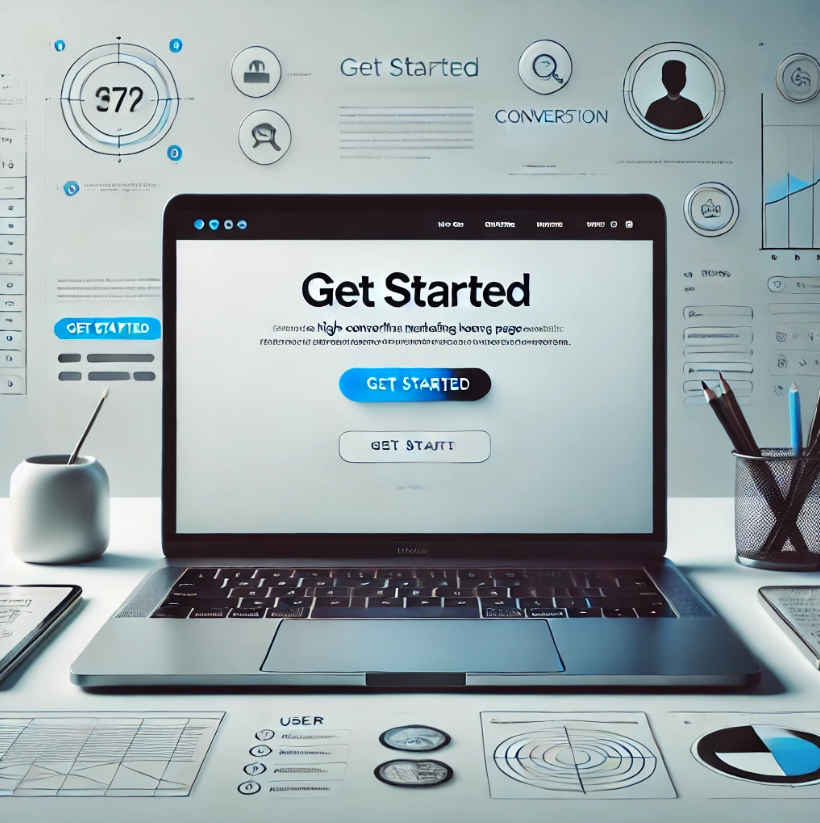Creating a high-converting landing page is crucial for any online business looking to boost sales, generate leads, or encourage user engagement.
In this article, we’ll explore the best practices for designing landing pages that not only attract visitors but also convert them into customers.
Whether you’re a small business owner or a digital marketer, understanding these practices will enhance your landing page strategy.
What is a Landing Page?
A landing page is a standalone web page designed specifically for a marketing or advertising campaign.
Unlike other pages on your website, it has a single focus: to convert visitors into leads or customers.
This focus is achieved through a clear call-to-action (CTA) and relevant content that resonates with the target audience.
Why Are High-Converting Landing Pages Important?
High-converting landing pages are essential for several reasons:
- Increased ROI: A well-optimized landing page can significantly improve your return on investment by turning more visitors into customers.
- Targeted Traffic: Landing pages allow you to tailor your message to specific audiences, which enhances engagement and conversion rates.
- Measurable Results: You can track the performance of landing pages through analytics, making it easier to refine your marketing strategy.
Best Practices for High-Converting Landing Pages
1. Define Your Goal
Before you start designing your landing page, clearly define its purpose. Are you looking to collect email addresses, sell a product, or promote a webinar?
Having a clear goal will guide your content and design decisions.
2. Craft a Compelling Headline
Your headline is the first thing visitors see, and it plays a critical role in capturing their attention. Make it clear, concise, and compelling.
Try to convey the main benefit of your offer in 10 words or less.
For example, “Unlock Your Potential: Download Our Free Guide Today!”
3. Use Engaging Visuals
Visual elements can enhance your landing page and help convey your message more effectively.
Use high-quality images, videos, or infographics that are relevant to your offer.
Remember to keep the design clean and uncluttered to maintain focus on your CTA.
4. Create a Clear Call-to-Action (CTA)
Your CTA should be prominent and persuasive. Use action-oriented language that encourages visitors to take the next step.
Phrases like “Get Started,” “Download Now,” or “Join Free for a Month” can be effective.
Also, consider using contrasting colors for your CTA button to make it stand out.
5. Keep the Content Concise
Visitors tend to skim content, so keep your text concise and to the point. Use short paragraphs, bullet points, and subheadings to break down information.
Highlight key benefits and features to make the content easily digestible.
6. Build Trust with Social Proof
Incorporating social proof can significantly enhance your credibility. Show testimonials, reviews, or case studies from satisfied customers.
This not only builds trust but also encourages potential customers to feel more confident in their decision to convert.
7. Optimize for Mobile Devices
With a growing number of users accessing the internet via mobile devices, it’s essential to ensure your landing page is mobile-friendly.
Use responsive design to ensure that your landing page looks great and functions well on all screen sizes.
8. Minimize Distractions
Keep your landing page focused on the goal by minimizing distractions. Avoid including unnecessary links or navigation options that could lead visitors away from the primary action you want them to take.
The fewer distractions, the higher the conversion rate.
9. A/B Testing
To discover what works best, conduct A/B tests on different elements of your landing page, such as headlines, images, and CTA buttons.
This will help you determine which variations lead to higher conversion rates and allow you to make data-driven decisions.
10. Monitor and Analyze Performance
Use analytics tools to track the performance of your landing page. Monitor metrics such as conversion rates, bounce rates, and average time on page.
Regularly reviewing this data will help you identify areas for improvement and optimize your landing page further.
Conclusion
Creating high-converting landing pages requires a combination of strategic planning, understanding your audience, and continuous optimization.
By following the best practices outlined in this article, you can enhance your landing pages to drive more conversions and achieve your business goals.
Remember, the key to success lies in testing, analyzing, and adapting your approach based on data and user feedback.
By implementing these strategies, you’ll be well on your way to creating effective landing pages that not only attract visitors but also turn them into loyal customers.


